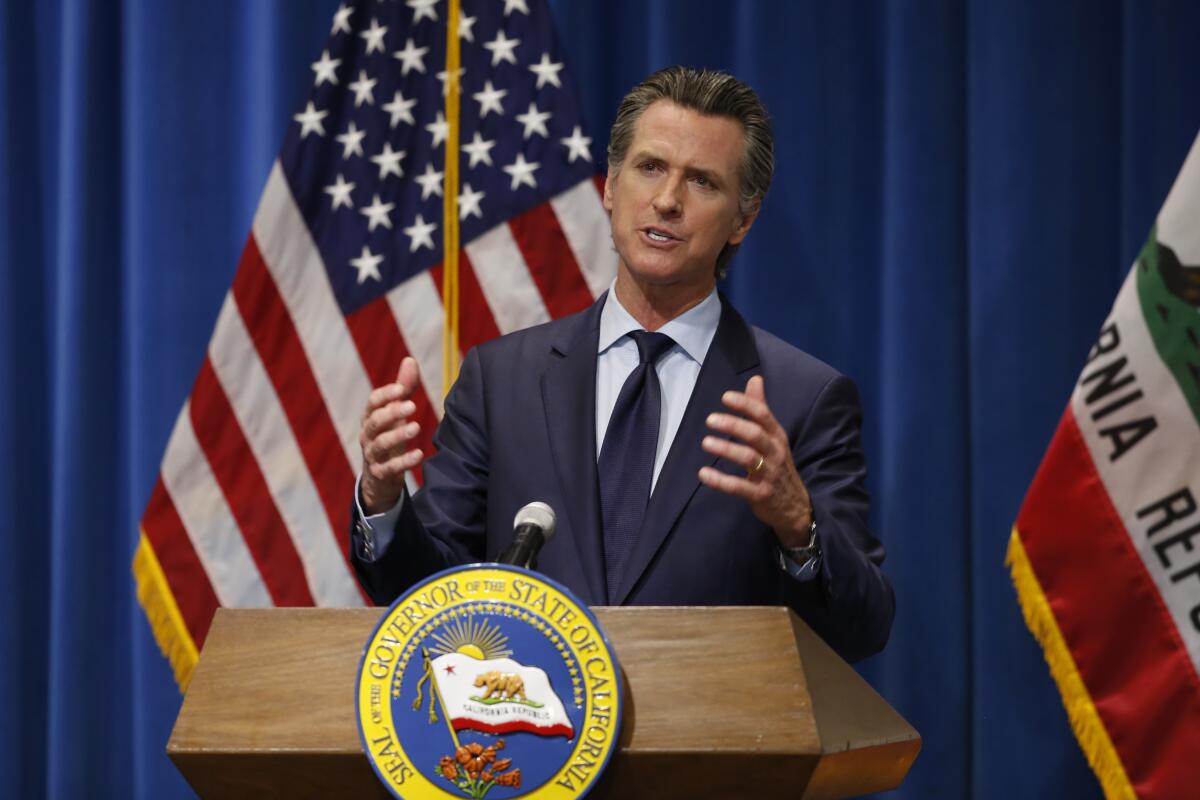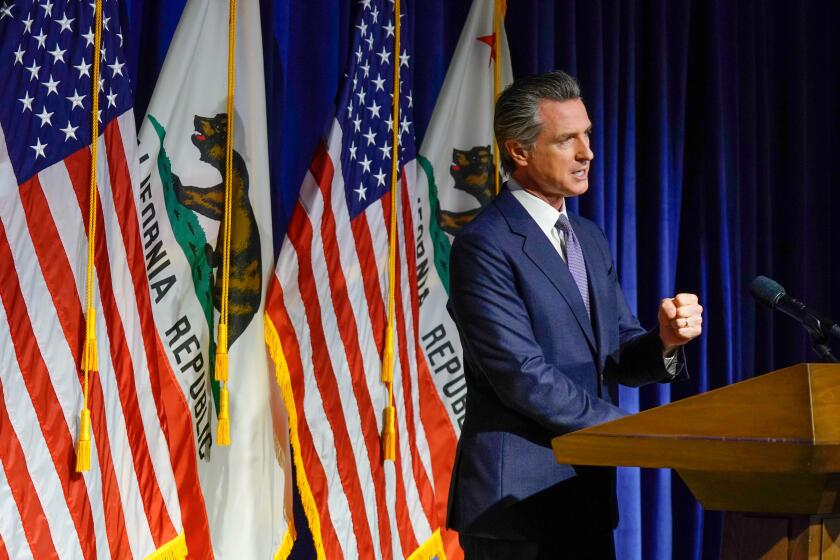California schools face funding crisis as student population declines

SACRAMENTO — Gov. Gavin Newsom projected another year of record funding for schools during his budget presentation on Monday but warned that some districts could be in financial trouble as student enrollment continues to decline.
Newsom’s budget proposal pointed to a state population decline driven by plummeting birth rates that have “eroded” K-12 enrollment projections, and proposed tweaking California’s decades-old education funding formula to “minimize the impact” of fewer students in schools, with funding tied to attendance.
Newsom’s budget proposes broadening the policy to allow districts to base funding on attendance in the current year , prior year or the average of that from three prior years — whichever is greater. The proposal gives school districts “more running room to plan against really shocking declines,” said Keely Martin Bosler, director of Newsom’s Department of Finance.
Average daily attendance among the state’s 6 million-plus K-12 students has decreased by 271,000 students since 2014. School funding in California is based on student enrollment and reduced by average daily attendance records, an attempt to hold schools accountable for chronic absenteeism.
Enrollment declines has been compounded by the COVID-19 pandemic as fewer families moved to California and campus closures “pushed parents to consider alternatives to their neighborhood public school,” according to budget documents released by Newsom on Monday.
The state’s population declined by 173,000 between July 2020 and July 2021, bringing the estimated total population to 39.37 million.
“Some school districts over the next few years will be faced with difficult choices to remain fiscally solvent,” the budget states.
Last week, state Sen. Anthony Portantino (D–La Cañada Flintridge) introduced legislation that takes a bolder approach to the enrollment problem. The new bill proposes that education funding be tied to total annual student enrollment rather than how often students actually attend class. The move could bring in an additional $3 billion in annual state funding for schools, according to Portantino.
Portantino said in a statement Monday that he is encouraged by Newsom’s proposal and that “the governor’s instincts are right,” but that he will continue to make the case that “this is the perfect time to enact the structural reforms necessary to better fund our schools and to create the stability that education leaders need to better serve our children.”
Newsom has not commented on Portantino’s legislation.
The governor’s plan lays out close to $10 billion in new spending on COVID, climate change, homelessness, inequality and ‘keeping our streets safe.’
At San Bernardino City Unified, enrollment dropped by more than 2,000 students last year, equivalent to eight years’ worth of past annual population declines in the district.
The district, which enrolls more than 50,000 students, is already assessing where to make potential cuts, said Associate Supt. Harold Sullins.
“With this impending cliff and the acceleration of the issues that COVID has presented, I’m grateful we’re having this conversation. But it’s not a new issue for school districts, and we just wish it didn’t take a pandemic to get here,” Sullins said. “Unfortunately, we should have gotten to this place much earlier.”
The California Assn. of School Business Officials said that it supports “any statutory changes that recognize the enrollment realities are varying and unique” and “any opportunities to alleviate financial pressures around these conditions.”
School leaders who have long bemoaned average daily attendance, saying it is a volatile policy that makes budgeting more difficult, welcome a change but say Newsom and Portantino’s plans don’t go far enough.
Newsom’s projected $119 billion in education funding and record per-pupil spending won’t necessarily save districts facing systemic deficits and significant enrollment declines, as state law dictates how the money can be spent.
Portantino’s proposal would require that half of any new funding brought in be dedicated to chronic absenteeism, restricting how money can be spent.
Kevin Gordon, an education lobbyist in Sacramento who represents superintendents across the state, said that the school funding conversation is “long overdue,” but it’s a heavy lift. Average daily attendance is referenced throughout state law and tied to other budget processes, and a shift to an enrollment-based policy will create significant ongoing costs to the state.
“The policy has never made any sense except that it puts a premium on making sure that we’re paying attention to if a kid is in the classroom every day, and I always felt that could be accomplished in other ways,” Gordon said. “From a public policy standpoint, it makes sense to move to an enrollment-based system, but it’s definitely more complicated than it might seem.”
More to Read
Sign up for Essential California
The most important California stories and recommendations in your inbox every morning.
You may occasionally receive promotional content from the Los Angeles Times.













